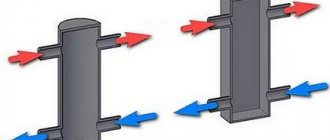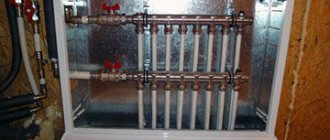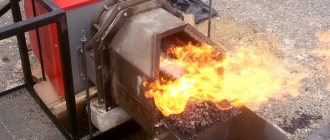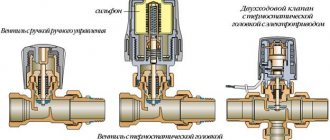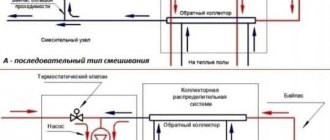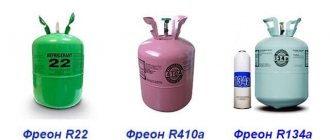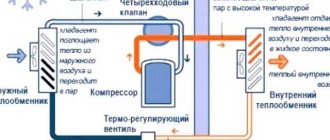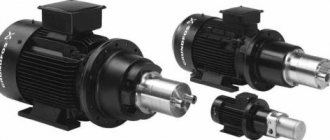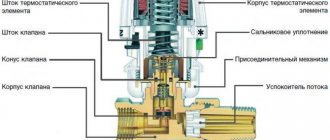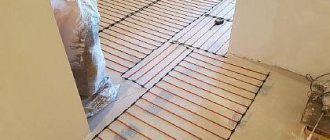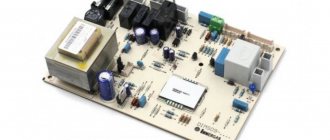Purpose
The installation of electric fire alarm sensors in premises is justified by the possibility of prompt response before a fire starts. Having received a message about the first signs of a fire, residents or visitors can immediately leave the building and notify the emergency services. This will allow you to quickly take emergency measures to prevent the spread of a fire at an early stage.
Posting rules
When installing an alarm with your own hands, you must comply with the regulatory requirements for placement established by the set of rules - clause 13, SP 5.13130.2009. The main points address the need:
- choosing the type of SPS based on the sensitivity of the device, area and functional purpose of the room;
- location of one loop on an area of up to 1600 sq. meters depending on the number of rooms and floors;
- determining the number of installed devices for each controlled area;
- control of the order of equipment placement on the ceiling and walls.
It is necessary to place the systems on the wall at a distance of 50 centimeters from the corner. On the ceiling - no more than 45 centimeters from the wall. The two-level circuit is connected at a height of 4 and 0.8 meters from the floor level. If the sensor is located at a high level - more than 6 meters from the floor - options must be provided for easy access for maintenance.
In a place where the ceiling height does not exceed 3.5 meters, one device can control an area of up to 80 square meters. meters. In this case, the connection of several fire-fighting installations must be carried out at a distance of no more than 9 meters.
How to choose?
When choosing a temperature sensor, you must be guided by the following criteria:
- if the sensor is in contact with or located inside the measured medium, then a contact model is taken, if it is located outside the object, then a non-contact model;
- the conditions and state of the environment in which it will operate (humidity, aggressive substances, etc.) must correspond to the capabilities of the sensor;
- the step and calibration of measurements should ensure convenient operation of both the sensor and the equipment;
- if the sensor must be replaced during operation, then replacement options are installed;
- when choosing a temperature sensor to replace a faulty one, it is better to use its VIN code;
- The operating temperature limit must cover all possible heating values, some of which are shown in the table below.
Table: temperature limits of thermoelectric type sensors
| Type | Compound | Temperature range |
| T | copper/constantan | -250 °C to 400 °C |
| J | iron/constantan | -180°C to 750°C |
| E | chromel/constantan | -40 °C to 900 °C |
| K | chromel / alumel | -180 °C to 1,200 °C |
| S | platinum-rhodium (10%) / platinum | from 0 °C to 1,700 °C |
| R | platinum-rhodium (13%) / platinum | from 0 °C to 1,700 °C |
| B | platinum-rhodium (30%) / platinum-rhodium (6%) | from 0 °C to 1,800 °C |
| N | nichrosil / nisil | -270 °C to 1,280 °C |
| G | tungsten / rhenium (26%) | from 0 °C to 2,600 °C |
| C | tungsten-rhenium (5%) / tungsten-rhenium (26%) | from 20 °C to 2,300 °C |
| D | tungsten-rhenium (3%) / tungsten-rhenium (25%) | from 0 °C to 2,600 °C |
Classification by type
The classification of fire response devices includes four main types:
- Thermal. Reacts in case of temperature changes. There are threshold and integral detectors. In the first case, the mechanism is set to a threshold value (about 70 degrees), at which a notification of the appearance of a flame is registered. In the second, it reacts to a sharp increase in room temperature.
- Smoke. The design of the equipment contains an infrared emitter. Triggers when particles enter the spectrum. Disadvantage: it can generate a signal when there is a large amount of dust or steam.
- Flame sensor. It is based on determining the spectrum of optical waves that are characteristic of the presence of a smoldering hearth or an open fire. Determination of the fact of fire occurs at the initial stage, when there are no obvious factors - smoke and heat.
- Combined. Based on several methods for determining the appearance of a flame. Often combines heat and smoke models.
Application
The scope of application of temperature sensors covers both household appliances and equipment for general industrial use, the agricultural industry, the military industry, and the aerospace sector. Each of you can find them at home in heating appliances - boilers, ovens, multicookers or bread makers.
In heavy industry, thermal sensors make it possible to control the degree of heating of furnaces, air in the working area, and the condition of rubbing surfaces. In medicine, they are used to control temperature in hard-to-reach places or to simplify various procedures.
Many car enthusiasts often come across temperature analyzers that monitor the condition of oil or other coolant. On the railway network, they make it possible to monitor the heating of axle boxes and wheel sets. In the energy sector, they are used to examine contact connections and the quality of surface contact.
Features of different types of devices
Smoke alarms
One fire smoke detector (FSD) in residential premises, the ceilings of which are not higher than 300 cm, is capable of serving 25 square meters. m area. It is necessary to install devices taking into account the minimum permissible distance from the wall. The standard connection diagram for Russian-made devices includes blocks with 4 contacts:
- remote indicator;
- positive terminal of the electrical element;
- negative terminal of the power supply;
- negative terminal provided to control power supply.
Manual call points
The IPR manual call point, unlike automatic trigger systems, must be installed at a height accessible to every person. The placement order is determined by NPB 88–2001:
- installation height from floor level - 1.5 meters;
- the distance between adjacent elements is 50 m in the building, 150 m on the facade.
- distance from foreign objects - 75 cm.
The basis of any model includes a plastic case, a fuse, mechanisms for changing the state of the circuit and fixing the alarm signal. The IPR circuit has four contacts that allow you to change the connection type to:
- warning about the presence of a source of flame;
- smoke dispersion simulation;
- security and fire alarm notifications;
- short circuit.
Flame sensor installation diagram
The flame sensor detects the presence of open fire using an infrared receiver, which is provided in the design. There are two versions of the device - with three and four contacts.
The IR sensor responds to radiation within the range of 750–1100 nm. Additionally, an analog output can be built-in, which allows not only to detect the presence of an open flame, but also to determine the nature and scale of the fire.
The system is connected to the Arduino board using “male-male” and “male-female” wires - the device contacts are marked with symbols to help you connect the elements correctly. Power comes through the 5V “leg”.
Fire alarm connection diagram
There are three main fire alarm connection schemes:
- Threshold . The sensors set threshold values for the state of the room. When they are reached, the devices automatically signal the presence of a fire.
- Addressed surveys . The controller systematically sends pulses to the devices to check their status.
- Addressable analogue . The control station independently makes decisions about the state of the sensors based on the results of data processing by an analog-to-digital converter.
Do-it-yourself connection of sensors to fire and security devices
First of all, determine the number of sensors to be placed based on the area of the space. According to the rules, one device can serve 80 square meters. meters, if the ceiling height does not exceed 3.5 meters. There must be at least two controllers in one room.
Above is a diagram for connecting resistive loops with two sensors. From the elements, the positive and negative lines are respectively connected to the “+” and “-” terminals on the fire safety device panel. The number and name of inputs depends on the model of the alarm system.
Differences in response tactics
The ATP connection scheme may vary depending on the response tactics. There are four main types of fire detector connection:
- With re-request on smoke devices . After one of the units in the circuit is triggered, the power from the loop will be removed to restart for 3 seconds. If, upon reconnection and analysis within 5 seconds, the mechanism reacts again, a “Fire” event will be generated.
- No re-request . In this case, power is not removed from the loop. On the first trigger, a “Attention” request is created, and on the second, a “Fire” request. If during a test test the second means does not work, the resistance of additional resistors can be reduced to 1.1 kOhm.
- Thermal . Unlike smoke structures on thermal devices, the message is formed as a result of an increase in temperature. When triggered, the first meter generates a "Attention" message and immediately leads to a "Fire" event on the second.
- Manual . The manual type mechanism is triggered when a person independently turns on the “Fire” signal.
Connection diagram for hand sensors
To connect the IPR circuit to the control panel, terminal resistors with a nominal value of 5 kOhm are used. When you press a button on any manual call point, the resistor is triggered. The computer perceives its activation as a sign of alarm and turns on the alarm indicator.
The order of connecting the wires: from the negatively charged terminals No. 3 to No. 4 of the sensors is carried out sequentially to the outermost device. Additional 2.5 kOhm resistors are installed from the positive outputs. The blue wire is connected to the “–” terminal on the device, the red wire is connected to the “+”.
Connection diagram for automatic sensors
The connection of wires on various types of automatic fire appliances - smoke, heat - occurs according to a similar scheme. There are differences in the sensors only in the operating principle.
The detectors are placed in one line and connected to a single loop. For connection, two two-core non-flammable cables are used: the first supplies power, the second is routed to the contacts of the second unit.
Using a similar principle, it is necessary to connect the elements in series to the panel from +1- to +8-. In this case, it is recommended to use resistors with the same value of 5 kOhm on each sensor - on the positive wires coming from output No. 2. The sensor circuit is also routed through negative terminals No. 3 and No. 4.
On the last device, a 10 kOhm terminal resistor is installed parallel to the circuit, which determines the integrity of the system.
Consequences of sensor failures
If problems appear in the operation of the boiler, the reason may lie in the incorrect functioning of the sensors. Below are examples of such deviations:
- Sudden boiler shutdown. There is a possibility that the temperature sensor enable relay has burned out. Less often, the reason lies in a malfunction of the control unit.
- The pellet/gas burner goes out. A sensor malfunction sometimes causes the main burner to automatically turn off. This leads to the fact that non-standard equipment also stops working.
- Visible malfunction of the control unit. This can be caused by a stuck temperature sensor relay.
Features of placement of wireless installations
Along with classic models, it is possible to install the device without the use of additional wiring to ensure communication between several meters and power supply. These are the simplest device options, since their installation and configuration do not require special knowledge.
Fastening is done using self-tapping screws to a wooden beam. The plate is attached to the ceiling. The protrusions and grooves on the elements are aligned, the device is twisted clockwise. The distance between the meters and the central unit should not exceed 100 meters.
The equipment runs on a battery that lasts up to 12 months. Information about an alarm event is transmitted to the central alarm unit using a radio signal. An 85 dB sound siren is located inside, which automatically goes off after detecting a fire.
Recommendations for use
After installing manual fire call points and other types of fire alarm systems in a building, it is recommended to test the system. According to the RD-009-01-96 standard, the device must be checked every month in order to prevent emergency situations.
On the IPR, just press a button to send a signal. Automatic systems can be checked using available tools. The simplest option is a lit cigarette. The smoke must be directed towards sensitive areas of the detector. If connected and configured correctly, the device will generate an alarm.
In the future, carry out monthly maintenance of the elements in accordance with regulatory documentation. In particular:
- clean the surface from accumulated dirt and dust;
- wipe the internal elements with a cotton swab moistened with alcohol or blow with a compressor with compressed air;
- if necessary, replace worn-out batteries with new ones;
- check the strength of the fastening and the tightening of the screws.
It is important to carry out preventive maintenance and performance assessment at least once a year to avoid device malfunction. In general, it is not recommended to carry out connection and configuration yourself unless you have special knowledge. It is better to entrust the work to experienced specialists.
How the system works
To ensure fire safety, an alarm system is installed, which notifies with an alarm signal in the event of smoke. This method is effective. The system can save many lives and also preserve property. In this article, we will take a closer look at the features and functionality of the fire sensor system.
In those rooms where there is a threat of fire, the connection of fire sensors is mandatory. Previously, such equipment was used exclusively in industrial warehouses. Today, the system is standard and indispensable, since it is installed by default during the construction of apartments. This happens primarily to ensure safety in the future, since currently, during the finishing of an apartment, a huge amount of materials are used that are very flammable.
The system, in turn, consists of a group of devices that are combined and operate thanks to configuration. When a fire problem is detected, the system transmits an alarm signal to a special fire department console, which facilitates their immediate arrival at the scene of the fire. Improved systems are able to transmit information about the location of the fire. In order to carry out evacuation, a powerful sound signal is activated in the area. There are several types of fire detectors. They will be discussed below.
